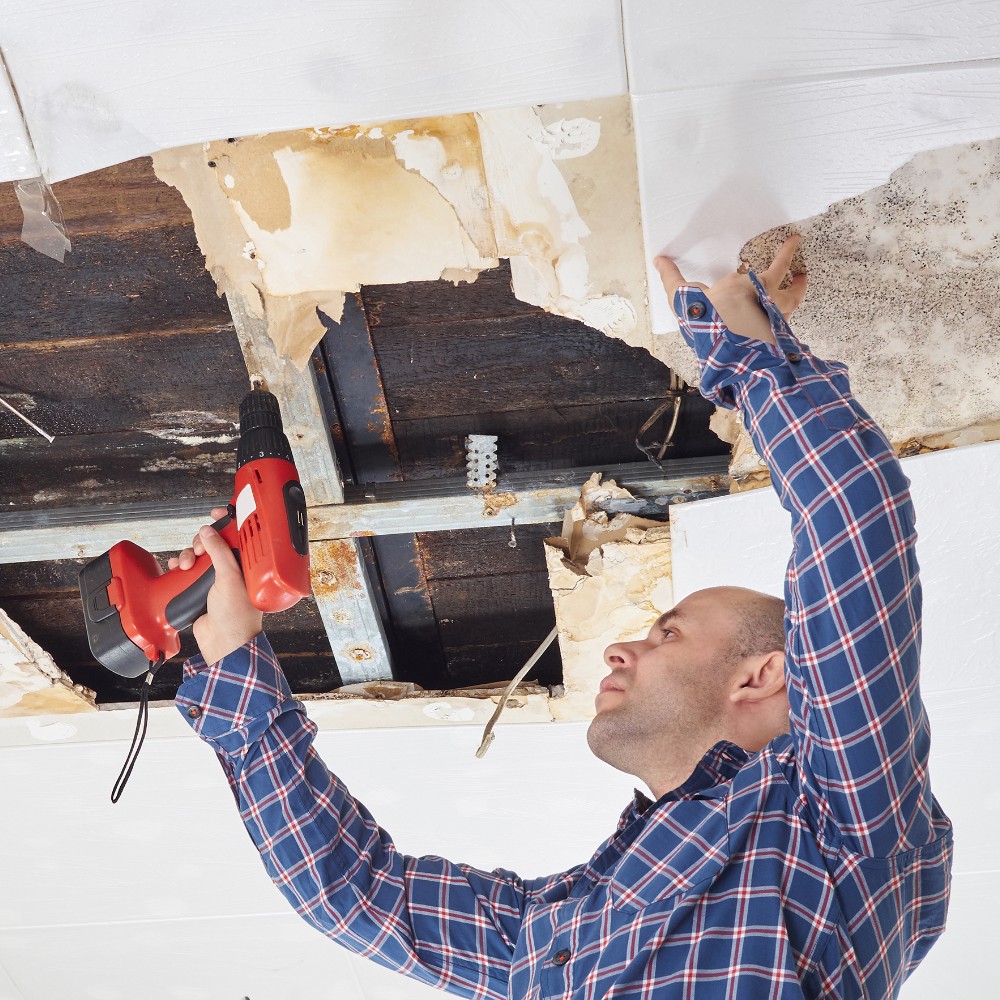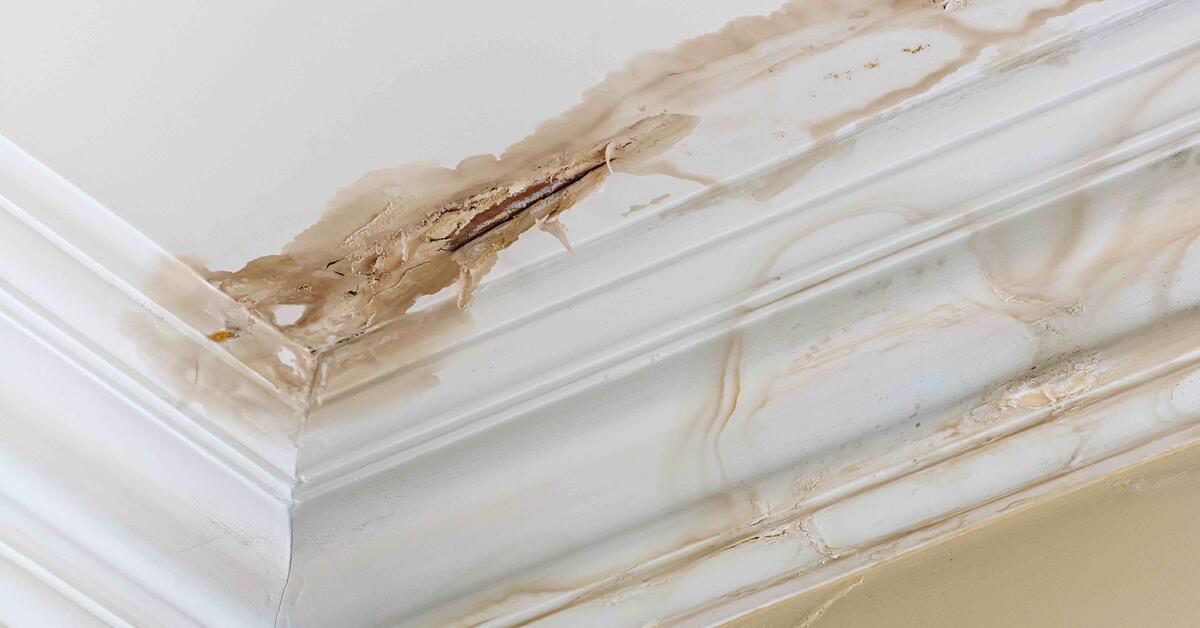Emergency Water Leak Repair to Prevent Further Property Destruction
Emergency Water Leak Repair to Prevent Further Property Destruction
Blog Article
The Process of Water Damage Clean-up: Ensuring Your Home Is Restored Properly
Water damages can be an overwhelming difficulty for property owners, demanding a structured and careful cleanup process to recover security and capability. At first, a comprehensive evaluation is crucial to recognize the level of the damage and figure out the appropriate remediation procedures. Following this, reliable water extraction methods play a critical function in mitigating additional injury. The nuances of drying out, disinfecting, and eventual restoration are equally vital and frequently ignored. Understanding these stages can make a considerable distinction in the outcome of your home's remediation, triggering a closer check out what each action involves.
Examining the Damage
Upon uncovering water damages, the primary step is to thoroughly evaluate the degree of the impact. This first assessment is crucial, as it aids establish the essential steps for efficient clean-up and repair. Begin by checking the affected locations, including wall surfaces, ceilings, floors, and individual items, to determine the resource of the water intrusion, whether from flooding, leakages, or condensation.
Documenting the damage is vital for both insurance policy claims and preparing restoration efforts - damage restoration services. Usage photographs and written notes to record the intensity of the damage, noting any type of affected architectural aspects and products. Pay unique focus to locations that may not be instantly noticeable, such as behind walls and under carpets, as hidden dampness can result in more difficulties, including mold and mildew growth
In addition, assess the timeline of the water exposure. The longer the materials continue to be wet, the better the potential for damage. Recognizing the period of exposure will certainly notify the seriousness of removal efforts. Inevitably, a comprehensive analysis lays the groundwork for an effective water damages cleaning procedure, ensuring that all affected locations are addressed effectively and extensively.
Water Extraction Strategies

Specialists normally use completely submersible pumps for larger volumes of water, which can quickly ease flooding in cellars or various other impacted areas. For smaller sized quantities, wet/dry vacuums are commonly made use of to draw out residual dampness from carpets and tough surfaces. In addition, using mobile extractors permits targeted elimination in restricted areas or areas with delicate materials.
In circumstances of polluted water, such as sewer or floodwater, advanced extraction methods might involve making use of biohazard equipment to ensure safety and security and conformity with health policies. High-powered extraction devices are crucial in reducing water retention in structural products, which can bring about mold growth and structural wear and tear otherwise attended to immediately.
Ultimately, the effectiveness of water extraction strategies plays an essential role in the overall success of the water damage clean-up procedure, preparing for succeeding reconstruction initiatives.
Drying and Dehumidification
Once standing water has been properly drawn out, the following important phase in the water damages cleanup procedure is drying and dehumidification. This action is important to protect against additional damages and mold growth, which can happen within 24 to two days in damp atmospheres.
To achieve efficient drying out, specialized tools such as industrial-grade air movers and dehumidifiers is utilized. Air movers circulate air throughout damp surfaces, boosting evaporation rates, while dehumidifiers decrease humidity levels airborne, promoting a favorable setting for drying. The combination of these devices guarantees that moisture is extracted from wall surfaces, floors, and furnishings, enabling them to dry extensively.
It is necessary to keep track of the drying out procedure very closely. Experts typically make use of dampness meters to evaluate the dampness web content in different products, guaranteeing that all impacted locations reach acceptable dryness degrees. This thorough approach helps to avoid surprise dampness pockets that can lead to architectural damage or unhealthy mold development.

Cleansing and Sanitizing
After the drying out and dehumidification stage is complete, the following essential step in water damage cleanup is cleaning and sanitizing the impacted areas. This procedure is essential to avoid the development of mold, germs, and other microorganisms that flourish in wet settings.
The cleaning phase usually includes getting rid of any kind of debris, dirt, and pollutants from surfaces using specialized cleansing agents. For hard surfaces, a combination of soap and water or industrial cleansing products is usually utilized. Soft products, such as upholstery and rugs, might call for extra considerable Check Out Your URL cleaning methods, including heavy steam cleaning or deep extraction methods, to make certain extensive hygiene.

Sanitizing complies with cleansing, making use of EPA-approved disinfectants to remove hazardous bacteria. This step is important, especially in areas that might have entered call with floodwaters or sewage, as these resources can posture severe wellness threats.
Additionally, it is crucial to resolve any kind of staying smells, which might call for making use of smell neutralizers or advanced methods like ozone treatment. Correct cleaning and sterilizing not only restore the safety and security and health of your home however additionally lay the groundwork for effective reconstruction and fixings in subsequent stages of the water damage clean-up process.
Reconstruction and Repair Services

Once the assessment is complete, restoration initiatives can start. This normally includes fixing or changing broken materials, making sure that all job abides by regional building ordinance and requirements. If drywall has been compromised, it will require to be eliminated and replaced with brand-new material. In addition, floor covering may require similar attention, relying on the degree of water direct exposure.
It is important to involve knowledgeable remediation specialists throughout this process, as they possess the experience to handle complicated repair services properly. They can assist mitigate possible future concerns, such as mold growth or architectural instability, thus guaranteeing a habitable and secure living environment. Eventually, effective repair and fixings recover the home's integrity and enhance its total value.
Final Thought
In verdict, the procedure of water damages clean-up is essential for restoring a home to its pre-damage condition. Each stage, from evaluating the damage to implementing efficient water extraction strategies, followed by extensive drying out, sanitizing, and required repair work, plays a crucial role in making sure security and conformity emergency restoration specialists with structure criteria. Effective execution of these steps not only alleviates instant damage however likewise improves the long-lasting stability and value of the building.
Water damage can be a challenging difficulty for homeowners, requiring a thorough and structured cleaning procedure to recover safety and functionality. Ultimately, a comprehensive analysis lays the foundation for a successful water damages clean-up procedure, ensuring that all influenced areas are resolved efficiently and completely.
Reliable water extraction strategies are necessary in reducing damages and preventing additional difficulties following a water breach event.In verdict, the process of water damage cleanup is essential for bring back a home to its pre-damage condition. Each phase, from examining the damage to executing efficient water removal strategies, followed by complete drying out, disinfecting, and necessary repair services, plays an important duty in ensuring safety and compliance with building standards.
Report this page